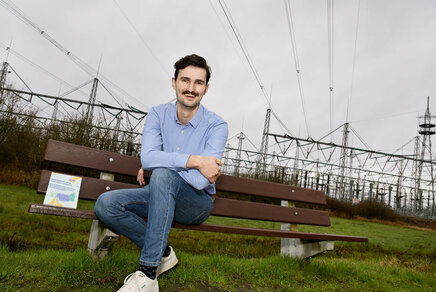Every noble metal atom counts in exhaust catalysts
Valerii Muravev obtained his PhD cum laude on November 26th at the department of Chemical Engineering and Chemistry.

Modern society heavily relies on transportation. The internal combustion engines that power most vehicles emit gaseous pollutants that are harmful to human health and to the environment. Catalytic removal of toxic carbon monoxide (CO) from exhaust fumes is typically done with expensive noble metals as one of the key components of automotive catalytic convertors. For his PhD research, Valerii Muravev explored ways to improve the efficiency of costly catalysts by optimising the use of noble metals in convertors. Muravev recevied his PhD cum laude on November 26th.
Noble metals, such as platinum (Pt), palladium (Pd), or rhodium (Rh), deposited on the surface of cerium oxide or ceria (CeO2) are widely used in the automotive industry as catalysts for the removal of harmful gases from car exhaust fumes.
The expensive noble metals are dispersed on the surface of the cerium oxide as very small nanoparticles where catalytic reactions take place. While these nanoparticles are distributed in an effort to increase the surface-to-volume ratio, the layer usually consisits of just a few thousand atoms.
Catalyic problems
This dispersal approach with noble metals leads to a number of critical issues though. First, the metal nanoparticles tend to agglomerate into larger particles during catalytic reaction conditions, which decreases their effectiveness in the conversion process.
Second, sintering of nanoparticles leads to loss of active metal surface area and deactivation of the catalyst. This means that it is highly desirable to develop catalysts where every noble metal atom can participate in the chemical conversion process without being deactivated.
Yet another issue with current catalysts is their limited activity at temperatures below 150 °C. This means that unreacted toxic gases such as CO can be emitted into ambient air if the temperature of the catalyst is not sufficiently high for the oxidation process to take place. This so-called cold-start problem is often encountered in hybrid cars, where frequent start-stop cycles of the engine lead to insufficient heating of the catalyst.
Palladium hopes
For his PhD research, Valerii Muravev focused on the development of noble-metal ceria-supported catalysts, with active metal entities as small as single atoms. He found that when platinium (Pt) is atomically dispersed over a ceria support the activity in low-temperature CO oxidation is lower than for Pt nanoparticles deposited on the same material.
On the contrary, palladium (Pd) single atoms display high low-temperature activity and can already oxidize CO at ambient temperatures. Unfortunately, on the surface of commercial ceria supports, the single Pd atoms are not stable and they can sinter into nanoparticles, losing their activity as a result.
One of the most important findings of Muravev’s research relates to the stabilization of Pd atoms on the surface of nanosized cerium oxide/ceria. Muravev found that by decreasing the size of the support particles atomically dispersed Pd can be stabilized.
Furthermore, by utilizing industrially relevant flame spray pyrolysis synthesis methods, he could identify the optimal size of the particles for the ceria support to maximize the low-temperature activity in CO oxidation of Pd-CeO2 catalysts.
This finding that the size of the ceria support can significantly influence the stability and activity of noble metal atoms anchored to its surface extends the toolbox for design of improved and more effective catalystic convertors for automotive industry.
Title of PhD-thesis: "Towards understanding the catalytic reactivity of metal-ceria interfaces".
First promotor: Emiel J.M. Hensen (TU/e). Second promotor: Abhaya K. Datye (University of New Mexico). Copromotor: Nikolay Kosinov (TU/e).
More on Sustainability



Latest news


